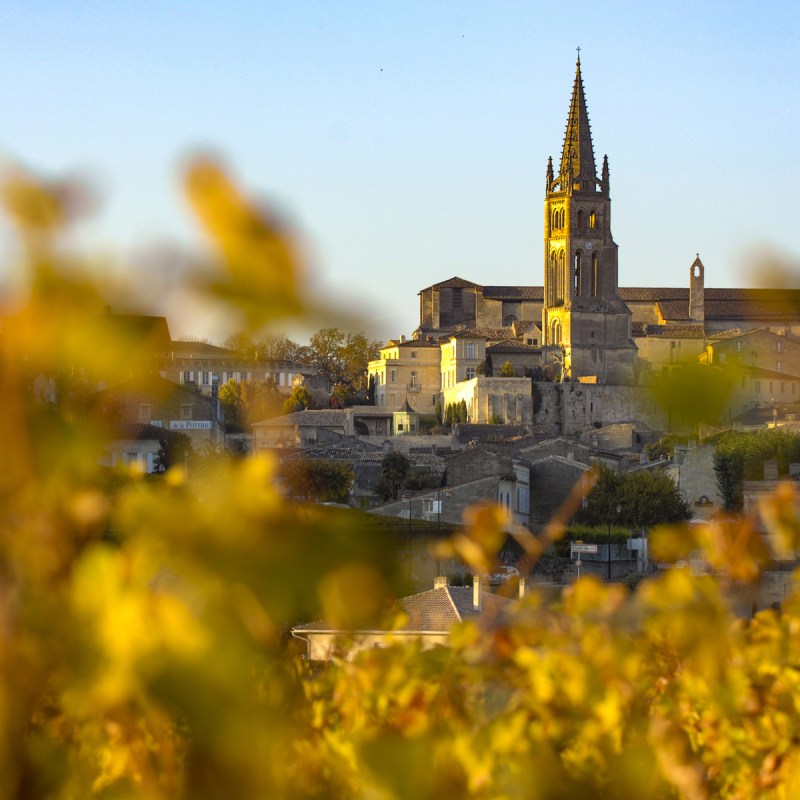
I can distinctly remember the first time I visited a vineyard as a travel writer. I was touring Canada’s Niagara Escarpment wine region and I asked a group of winemakers about the philosophy behind their work. They told me they were anti-Bordeaux. Their disdain was such that when they went to the aforementioned French wine region for research, they actually took photos of themselves flipping the bird at the famous Châteaux. Message received. Bordeaux was snobby, inaccessible, too big for its britches.
Videos by TravelAwaits
I kept this story to myself when I was touring Bordeaux’s wine region this autumn as part of a press trip. However, late one night and surrounded by many bottles, something in me decided to share the tale. (I think we can all agree that the “something” in question was wine!) To my utter delight, the young winemakers at my table roared in laughter. And, to my surprise, they agreed with those Niagara producers. Bordeaux was too uptight, they said, and they were committed to making it more accessible. Suddenly, things in Bordeaux didn’t seem that snobby at all. Turns out, you don’t need to be much of a wine expert to have an amazing time in Bordeaux. You just need a little guidance!
1. Know A Bit About The Name
Researching a trip to Bordeaux gets a bit confusing at times, thanks in part to the many meanings of the word itself. Bordeaux is the name of a city, the ninth largest in France. It can also refer to the municipal region around the city. And, of course, Bordeaux refers to a wine region. And what a wine region it is!
The Bordeaux wine region is the largest in France and one of the biggest in the world. And it’s fans would make a passionate case that it is the best. In his book Wine Simple, sommelier Aldo Sohm writes, “When you ask critics for their lifetime top ten, I promise you that there will be at least two Bordeaux in there.”
And that leads to yet another meaning of the word Bordeaux. It can be shorthand for a great bottle of wine, usually red, that comes from this region. But the one thing it is not is a grape. The region is synonymous with cabernet sauvignon and merlot grapes but there’s no ‘Bordeaux’ grape”.
2. Get A Grasp On Geography
Bordeaux’s wine region is a little bit like New York City. The city is divided into boroughs subdivided into further neighborhoods. Each neighborhood has their own price point and value proposition and it doesn’t really matter if it’s tiny or huge but everyone agrees that being close to the river is always a big deal. Everyone’s making pizza and you’ve got distinct local styles and individual producers who stake their reputations on small details like the nuance in the ingredients and preparation process.
That’s Bordeaux for you. It has several large regions and, within each, there are smaller regions known as appellations. “Appellation” comes from the French word “appel”, meaning “to call.” Just like you can only call yourself a true Brooklynite if you live in Brooklyn and cheer for the Nets, in Bordeaux a wine is only part of an appellation if it grew up there — and follows certain standards. In this case, it’s not what sports team you cheer for but the way grapes are used and how. Instead of pizza parlors, there are wine-producing estates known as châteaux. In some of the smallest appellations, there might be a few half a dozen châteaux producing their namesake wine.

3. Appreciate The Role Of The River
These regions and appellations are highly influenced by their proximity to water. Bordeaux is shaped quite literally by the Gironde Estuary (the point where the Dordogne River and the Garonne River meet and then head out to sea). The Gironde splits the region in two, creating a left bank and a right bank — as well as a pocket of land in the space between the Dordogne and Garonne known as Entre-Deux-Mers or “between two seas.” As a very loose rule, the left bank tends to produce more expensive wines and grows a lot of cabernet sauvignon, while the right is a touch more affordable and often produces merlot grapes. However, the truth is that you can find bargains and splurges and different grapes just about anywhere.
In case you’re suddenly feeling a bit bamboozled by the idea of remembering river banks and appellations, it’s helpful to know that Bordeaux, like all wine regions, is really all about agriculture. Water and landscape and soil quality and growing conditions affect wine like any other crop. And in Bordeaux, you’ve got some amazing farmers that bring it all together!
4. You Don’t Need To Be An Expert, Really!
If you’re thinking to yourself that the idea of visiting dozens of appellations, each containing a multitude of châteaux (i.e. winery estates) is overwhelming, you’re absolutely right. And therein lies the freedom of Bordeaux. No one could possibly know every wine, from every year, from every winery, in every appellation. You could spend your entire life just getting to know the wines of one tiny appellation, the differences in the soil at each château, the effects of aging in different barrels. As such, can anyone really call themselves a Bordeaux expert? It’s impossible! Which means that this is a region for everyone.

5. You Can Stick With The City
There’s no right or wrong place to start a Bordeaux wine tour. However, it’s worth mentioning that, if you can’t leave the city, you can still enjoy a wonderful wine experience. Bordeaux is home to an excellent wine museum, Cité du Vin. A glass of wine at the rooftop bar is included with admission and there is also a superb restaurant on site.
Bordeaux is filled with wine shops but the best of the best is L’Intendant. Located in the heart of the city, just a few short steps from the Opera House, this multi-story wine shop is built around a giant circular staircase and is a dream for photographers as well as oenophiles. You’ll find inexpensive bottles on the ground floor, along with helpful staff who can arrange international shipping.

6. Explore Guided Day Trips To Wine Country
There are dozens of guided tour options in Bordeaux wine country and the tourism office has a well organized page listing many of them. The less expensive excursions, starting at just a few euros, are designed for people with their own transportation. Look beyond the prosaic vineyard tour and tasting combos for more inspiring activities, like this combination of a wine and chocolate tasting.
Higher priced items include transportation from Bordeaux city center and often run a full day. You can expect to pay up to 150 euros (around $170) for a small group tour that includes lunch, a village tour, and a visit to two vineyards. I like this day-long visit to St-Emilion which includes a bike ride, a walking tour, and vineyard lunch.
A guided tour is a nice way to see things further afield without having to worry about driving, navigating, and hiring a car. However, you are limited by a tight schedule and set itinerary. A much more flexible and economical option is to design your own excursions.
7. You Can Plan A DIY Bordeaux Wine Tour
It is absolutely possible to explore on your own. In fact, you might not even need a car! You can use public transportation to visit many châteaux just outside the city of Bordeaux. If you’re willing to add on a bike rental, your options increase even more. The tourism board has an excellent page outlining the different options. I’ve followed their instructions for traveling between the city center and Podensac and had an excellent experience.
If you do explore the region on your own by car, plan on appointing a designated driver with a fully charged phone and GPS capability for navigation. With your own wheels, the world is your oyster (an apt cliche, as some of the world’s best shellfish comes from the Bordeaux coast!) You can explore by interest or appellation. The Bordeaux Wine Trip blog (part of Pulpe Magazine), has lists of vineyards according to theme — like artsy vineyards, eco-properties, historical vineyards, and so on. If you’re overwhelmed on where to start, consider embracing a theme to guide your journey.
Alternatively, choose an appellation and start exploring. I’d go with a tiny one. It’s much easier to get a sense of what Pomerol-produced wine is like than Sainte-Foy-Bordeaux, just because you’ll be spending far less time driving around. Rest assured that every appellation produces excellent red and white wines and wineries are eager to help you find a blend that you love. You can expect warm welcomes that might even make those Niagara producers change their minds!
Pro Tip: Background Reading
There’s a great section on Bordeaux in Elizabeth Schneider’s fun and easy-to-read book, Wine For Normal People.
For more information on Bordeaux and the delectable wine enjoyed worldwide:
